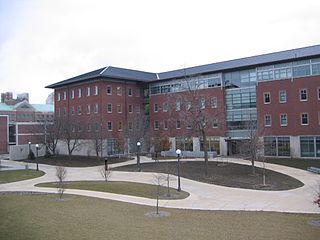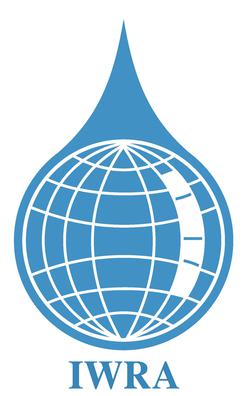Community of Science was a collection of online databases, providing research information to both the public and subscribers, and services for the research community. It is owned by ProQuest. [1]
Community of Science was a collection of online databases, providing research information to both the public and subscribers, and services for the research community. It is owned by ProQuest. [1]
Community of Science was founded in 1988 by Johns Hopkins University. [2] [3] [4] [5]
The Community of Science databases were originally hosted online at http://cos.gdb.org/, [6] [7] on the webserver of the GDB Human Genome Database. [8] Community of Science was also accessible via U.S. Department of Agriculture CRIS, National Science Foundation, and Department of Health and Human Services. [7]
As of 1997 [update] the CEO and president was Huntington Williams, and the organisation was located in Baltimore, Maryland. [9]
Canadian editions of these databases also existed. [4]
The following organisations are subscribed:

The Internet is the global system of interconnected computer networks that uses the Internet protocol suite (TCP/IP) to communicate between networks and devices. It is a network of networks that consists of private, public, academic, business, and government networks of local to global scope, linked by a broad array of electronic, wireless, and optical networking technologies. The Internet carries a vast range of information resources and services, such as the interlinked hypertext documents and applications of the World Wide Web (WWW), electronic mail, telephony, and file sharing.

A supercomputer is a type of computer with a high level of performance as compared to a general-purpose computer. The performance of a supercomputer is commonly measured in floating-point operations per second (FLOPS) instead of million instructions per second (MIPS). Since 2017, supercomputers have existed which can perform over 1017 FLOPS (a hundred quadrillion FLOPS, 100 petaFLOPS or 100 PFLOPS). For comparison, a desktop computer has performance in the range of hundreds of gigaFLOPS (1011) to tens of teraFLOPS (1013). Since November 2017, all of the world's fastest 500 supercomputers run on Linux-based operating systems. Additional research is being conducted in the United States, the European Union, Taiwan, Japan, and China to build faster, more powerful and technologically superior exascale supercomputers.

The National Center for Supercomputing Applications (NCSA) is a state-federal partnership to develop and deploy national-scale cyberinfrastructure that advances research, science and engineering based in the United States. NCSA operates as a unit of the University of Illinois Urbana-Champaign, and provides high-performance computing resources to researchers across the country. Support for NCSA comes from the National Science Foundation, the state of Illinois, the University of Illinois, business and industry partners, and other federal agencies.
The National Science Foundation Network (NSFNET) was a program of coordinated, evolving projects sponsored by the National Science Foundation (NSF) from 1985 to 1995 to promote advanced research and education networking in the United States. The program created several nationwide backbone computer networks in support of these initiatives. It was created to link researchers to the NSF-funded supercomputing centers. Later, with additional public funding and also with private industry partnerships, the network developed into a major part of the Internet backbone.
The Protein Data Bank (PDB) is a database for the three-dimensional structural data of large biological molecules such as proteins and nucleic acids, which is overseen by the Worldwide Protein Data Bank (wwPDB). These structural data are obtained and deposited by biologists and biochemists worldwide through the use of experimental methodologies such as X-ray crystallography, NMR spectroscopy, and, increasingly, cryo-electron microscopy. All submitted data are reviewed by expert biocurators and, once approved, are made freely available on the Internet under the CC0 Public Domain Dedication. Global access to the data is provided by the websites of the wwPDB member organisations.

Squid is a caching and forwarding HTTP web proxy. It has a wide variety of uses, including speeding up a web server by caching repeated requests, caching World Wide Web (WWW), Domain Name System (DNS), and other network lookups for a group of people sharing network resources, and aiding security by filtering traffic. Although used for mainly HTTP and File Transfer Protocol (FTP), Squid includes limited support for several other protocols including Internet Gopher, Secure Sockets Layer (SSL), Transport Layer Security (TLS), and Hypertext Transfer Protocol Secure (HTTPS). Squid does not support the SOCKS protocol, unlike Privoxy, with which Squid can be used in order to provide SOCKS support.

Paulo Reglus Neves Freire was a Marxist Brazilian educator and philosopher who was a leading advocate of critical pedagogy. His influential work Pedagogy of the Oppressed is generally considered one of the foundational texts of the critical pedagogy movement, and was the third most cited book in the social sciences as of 2016 according to Google Scholar.
Neuroinformatics is the emergent field that combines informatics and neuroscience. Neuroinformatics is related with neuroscience data and information processing by artificial neural networks. There are three main directions where neuroinformatics has to be applied:

The D-8 Organization for Economic Cooperation, also known as Developing-8, is an organisation for development co-operation among Bangladesh, Egypt, Indonesia, Iran, Malaysia, Nigeria, Pakistan, and Turkey.
The GDB Human Genome Database was a community curated collection of human genomic data. It was a key database in the Human Genome Project and was in service from 1989 to 2008.
Anthony James Cuticchia Jr. was an American scientist with expertise in the fields of genetics, bioinformatics, and genomics. In particular, he was responsible for the collection of the data constituting the human gene map, prior to the final sequencing of the genome. He was also a practicing attorney. He died due to cancer on January 6, 2022.

Larry Lee Smarr is a physicist and leading pioneer in scientific computing, supercomputer applications, and Internet infrastructure. He is currently a Distinguished Professor Emeritus at the University of California, San Diego, and was the founding director of the California Institute for Telecommunications and Information Technology, as well as the Harry E. Gruber Endowed Chair Professor of Computer Science and Information Technologies at the Jacobs School of Engineering.
The Texas Advanced Computing Center (TACC) at the University of Texas at Austin, United States, is an advanced computing research center that is based on comprehensive advanced computing resources and supports services to researchers in Texas and across the U.S. The mission of TACC is to enable discoveries that advance science and society through the application of advanced computing technologies. Specializing in high-performance computing, scientific visualization, data analysis & storage systems, software, research & development, and portal interfaces, TACC deploys and operates advanced computational infrastructure to enable the research activities of faculty, staff, and students of UT Austin. TACC also provides consulting, technical documentation, and training to support researchers who use these resources. TACC staff members conduct research and development in applications and algorithms, computing systems design/architecture, and programming tools and environments.
SciVee was a science video sharing website where researchers could upload, view and share science video clips and connect them to scientific literature, posters and slides from 2007 to 2015. The SciVee website is partnered with three groups: The Public Library of Science (PLoS), a publisher of a series of open access (OA) journals who have added content to the website, the National Science Foundation (NSF), who provided seed funding to start the website, and the San Diego Supercomputer Center (SDSC), who houses SciVee's video servers and data for the website. The University of California, San Diego-based service uses Adobe Flash technology to display video combined with documents and imagery via SciVee's patent pending rich web applications or "virtual studio" WYSIWYG to combine, or "synchronize" them with a published scientific article from a scientific journal or poster from a scientific conference poster session. Any video synchronized with a published scientific article is called a "pubcast," while a video that is synchronized with a scientific conference session poster is called a "postercast." Science videos that are not synchronized with a scientific article or poster can be uploaded and linked with supplementary files.
The International Generic Sample Number or IGSN is a persistent identifier for sample. As an active persistent identifier it can be resolved through the Handle System. The system is used in production by the System for Earth Sample Registration (SESAR), Geoscience Australia, Commonwealth Scientific and Industrial Research Organisation Mineral Resources, Australian Research Data Commons (ARDC), University of Bremen MARUM, German Research Centre for Geosciences (GFZ), IFREMER Institut Français de Recherche pour l'Exploitation de la Mer, Korea Institute of Geoscience & Mineral Resources (KIGAM), and University of Kiel. Other organisations are preparing the introduction of the IGSN.
The Bateson Project (1953-1963) was the name given to a ground-breaking collaboration organized by Gregory Bateson which was responsible for some of the most important papers and innovations in communication and psychotherapy in the 1950s and early 1960s. Its other members were Donald deAvila Jackson, Jay Haley, John Weakland, and Bill Fry. Perhaps their most famous and influential publication was Towards a Theory of Schizophrenia (1956), which introduced the concept of the Double Bind, and helped found Family Therapy.
This is a bibliography of works related the subject of tourism.

The iPlant Collaborative, renamed Cyverse in 2017, is a virtual organization created by a cooperative agreement funded by the US National Science Foundation (NSF) to create cyberinfrastructure for the plant sciences (botany). The NSF compared cyberinfrastructure to physical infrastructure, "... the distributed computer, information and communication technologies combined with the personnel and integrating components that provide a long-term platform to empower the modern scientific research endeavor". In September 2013 it was announced that the National Science Foundation had renewed iPlant's funding for a second 5-year term with an expansion of scope to all non-human life science research.
The Academic Scientific Research Computer Network of Armenia (ASNET-AM) is the national research and education network (NREN) of Armenia. ASNET-AM was created in 1994. The structure and policy of ASNET-AM operation was developed and realized by the Institute for Informatics and Automation Problems of the National Academy of Sciences of Armenia.

The International Water Resources Association (IWRA) is a non-profit organization and a non-governmental organization, with the purpose of improving the management of water resources. It is a professional network of water experts which facilitates global knowledge sharing of water resources information across disciplines and geographies. IWRA accomplishes its goal of education and knowledge sharing through events, publications and networking opportunities. The IWRA executive office is located in Paris.
{{cite web}}: CS1 maint: archived copy as title (link)